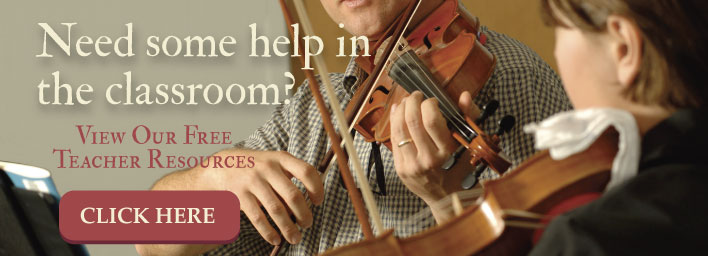
 If you’ve ever had to temporarily cover an elementary school music class without the benefit of a lesson plan or detailed learning ideas, you know that it’s not easy to come up with fun, edifying music games and activities on the fly. And although you can naturally assign busy work, it’s infinitely more rewarding to be able to interact with your interim class, teaching children the joys of music. Moreover, if you’re slated to sub for more than one day, the students will need to continue with their training.
If you’ve ever had to temporarily cover an elementary school music class without the benefit of a lesson plan or detailed learning ideas, you know that it’s not easy to come up with fun, edifying music games and activities on the fly. And although you can naturally assign busy work, it’s infinitely more rewarding to be able to interact with your interim class, teaching children the joys of music. Moreover, if you’re slated to sub for more than one day, the students will need to continue with their training.
Whether you work as a full time substitute teacher or have been asked to fill in at a moment’s notice, you can ensure that your class is both educational and fun by using some of these K-3 music lesson ideas.
Classroom Tic-Tac-Toe
Teaches: Notation, Instrument, and History Recognition
Materials: Various flashcards that display basic music notation, pictures of composers, and various instruments
Place nine chairs in a three by three grid, in the center of your classroom. Divide the class into two teams (“X’s” and “O’s”) and flip a coin to determine which team goes first. Show the first flashcard to one of the team members. If the student correctly identifies the card, he or she chooses a chair. Continue in this manner, alternating turns, until one team wins or a draw occurs.
You can make this activity more challenging for older students by requiring extra information with each flashcard. For example, after a note is correctly identified, ask the student how many beats that note would indicate in a certain time signature. Or if a composer has been recognized, ask for one or two examples of his work. Try not to repeat the same questions more than once, and don’t allow duplicate answers to follow up questions.
Staff Races
Teaches: Note placement on the staff
Materials: You’ll either need a large classroom with hard floors or have to perform this activity outside on an open, paved area. For the classroom, you’ll need window chalk or masking tape; for outdoor applications, any type of sidewalk chalk will work.
In the space you’ve allocated, create two large staffs. You’ll want to include about two feet between the lines and draw a big clef symbol. The staff itself doesn’t need to be wider than two to three feet—just big enough for one student to stand on it. Divide the class into two teams and have them line up about five feet away from their respective staff. While you stand in the middle, call out a note (for example, “C”). The two front students race to their staffs and whichever student stands on the correct space or line first earns a point for their team. The first team to reach 10 wins.
Enhance this activity by changing the clefs after a couple games.
Music Treasure Hunt/Maze Game
Teaches: Timbre recognition and teamwork
Materials: Masking tape or school desks, small prizes (inexpensive party favors make great treasure), four different instruments that create noticeably different timbre (For example: place dried beans in a wood shaker, some type of guiro, a triangle, etc.) to dictate right, left, forward, and backward directions.
First, divide the class into teams of six players and determine the roles: one student will be blindfolded to walk the maze; one student will be the conductor; and the other four students will be the players; give each one an instrument. Layout your maze on the floor using masking tape, or by arranging your desks/stands and chairs in a pattern. Once the student has been blindfolded, place the ‘treasure.’ The object of the game is for the team to work together, providing the sounds needed for the student walking the maze. The conductor indicates the direction by pointing to a specific player. The player plays his or her instrument while the blindfolded student walks that direction. No verbal clues can be given. Set a time limit for each trial.
With older students, you can use brass, woodwind, stings, and percussion to create the four different sounds.
Rhythm Games
Teaches: Note values
Materials: Dice, plastic tokens (dollar stores generally carry packs of 100), permanent marker
Draw various note values on the tokens. For example, three quarter notes, a whole note plus a quarter, dotted half plus two eighth notes, etc. Combinations should include totals from one to twelve. Equally distribute the tokens among your students, or teams if you have a large class. Each student takes turns rolling the dice and matching the count with their tokens. If the student can’t match the number exactly, he or she will have to pass, and after three passes, the student is out. The last student still playing is the winner.
Fun activities like these will make subbing for music classes a treat.


